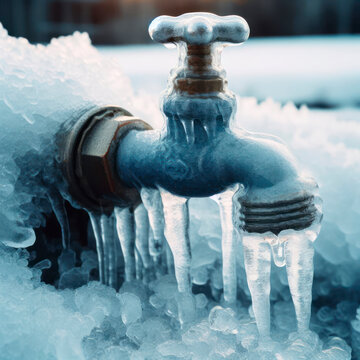They are making a number of great points on 6 Ways to Prevent Frozen Pipes as a whole in this great article below.

Cold weather can ruin your plumbing, especially by freezing pipes. Here's exactly how to prevent it from taking place and what to do if it does.
Intro
As temperature levels decrease, the threat of icy pipes boosts, possibly resulting in expensive repair services and water damages. Recognizing just how to prevent icy pipes is important for homeowners in cold environments.
Avoidance Tips
Protecting at risk pipelines
Wrap pipelines in insulation sleeves or make use of warm tape to protect them from freezing temperatures. Focus on pipelines in unheated or exterior areas of the home.
Heating techniques
Maintain indoor spaces properly heated, especially locations with plumbing. Open cupboard doors to enable cozy air to circulate around pipes under sinks.
Just how to identify icy pipes
Try to find lowered water flow from faucets, uncommon odors or sounds from pipes, and visible frost on subjected pipes.
Long-Term Solutions
Structural adjustments
Think about rerouting pipes away from outside walls or unheated areas. Include added insulation to attics, cellars, and crawl spaces.
Updating insulation
Invest in high-quality insulation for pipes, attics, and walls. Appropriate insulation aids maintain regular temperatures and lowers the threat of frozen pipelines.
Safeguarding Exterior Plumbing
Yard hoses and outdoor faucets
Separate and drain garden tubes before winter season. Install frost-proof faucets or cover outside faucets with insulated caps.
Comprehending Icy Pipes
What creates pipelines to freeze?
Pipelines ice up when revealed to temperature levels below 32 ° F (0 ° C) for prolonged durations. As water inside the pipelines freezes, it broadens, taxing the pipe walls and potentially causing them to break.
Dangers and damages
Frozen pipelines can lead to supply of water interruptions, residential or commercial property damage, and costly fixings. Burst pipelines can flooding homes and create comprehensive structural damages.
Signs of Frozen Pipeline
Determining frozen pipes early can stop them from bursting.
What to Do If Your Pipelines Freeze
Immediate actions to take
If you believe frozen pipes, keep faucets open to ease pressure as the ice melts. Utilize a hairdryer or towels taken in warm water to thaw pipelines gradually.
Verdict
Protecting against frozen pipes needs aggressive measures and quick reactions. By comprehending the reasons, indicators, and preventive measures, homeowners can shield their plumbing during winter.
5 Ways to Prevent Frozen Pipes
Drain Outdoor Faucets and Disconnect Hoses
First, close the shut-off valve that controls the flow of water in the pipe to your outdoor faucet. Then, head outside to disconnect and drain your hose and open the outdoor faucet to allow the water to completely drain out of the line. Turn off the faucet when done. Finally, head back to the shut-off valve and drain the remaining water inside the pipe into a bucket or container. Additionally, if you have a home irrigation system, you should consider hiring an expert to clear the system of water each year.
Insulate Pipes
One of the best and most cost-effective methods for preventing frozen water pipes is to wrap your pipes with insulation. This is especially important for areas in your home that aren’t exposed to heat, such as an attic. We suggest using foam sleeves, which can typically be found at your local hardware store.
Keep Heat Running at 65
Your pipes are located inside your walls, and the temperature there is much colder than the rest of the house. To prevent your pipes from freezing, The Insurance Information Institute suggests that you keep your home heated to at least 65 degrees, even when traveling. You may want to invest in smart devices that can keep an eye on the temperature in your home while you’re away.
Leave Water Dripping
Moving water — even a small trickle — can prevent ice from forming inside your pipes. When freezing temps are imminent, start a drip of water from all faucets that serve exposed pipes. Leaving a few faucets running will also help relieve pressure inside the pipes and help prevent a rupture if the water inside freezes.
Open Cupboard Doors
Warm your kitchen and bathroom pipes by opening cupboards and vanities. You should also leave your interior doors ajar to help warm air circulate evenly throughout your home.

I stumbled upon that review about How to prepare your home plumbing for winter weather when browsing the web. Remember to take a moment to promote this content if you appreciated it. We recognize the value of reading our article about Helpful Tips to Prevent Frozen Pipes this Winter.
More Details